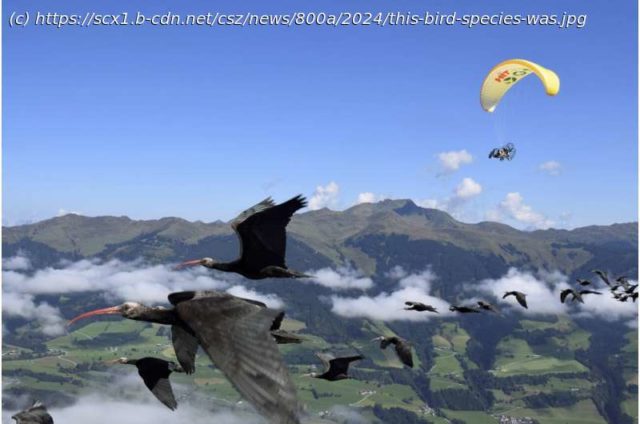How do you teach a bird how, and where, to fly? The distinctive Northern Bald Ibis, hunted essentially to extinction by the 17th century, was revived by breeding and rewilding efforts over the last two decades. But the birds—known for their distinctive black-and-iridescent green plumage, bald red head and long curved beak—don’t instinctively know which direction to fly to migrate without the guidance of wild-born elders. So a team of scientists and conservationists stepped in as foster parents and flight instructors.
How do you teach a bird how, and where, to fly? The distinctive Northern Bald Ibis, hunted essentially to extinction by the 17th century, was revived by breeding and rewilding efforts over the last two decades. But the birds—known for their distinctive black-and-iridescent green plumage, bald red head and long curved beak—don’t instinctively know which direction to fly to migrate without the guidance of wild-born elders. So a team of scientists and conservationists stepped in as foster parents and flight instructors.
« We have to teach them the migration route », said biologist Johannes Fritz.
The Northern Bald Ibis once soared over North Africa, the Arabian Peninsula and much of Europe, including southern Germany’s Bavaria. The migratory birds were also considered a delicacy and the bird, known as the Waldrapp in German, disappeared from Europe, though a few colonies elsewhere survived.
The efforts of Fritz and the Waldrappteam, a conservation and research group based in Austria, brought the Central European population from zero to almost 300 since the start of their project in 2002.
The feat moved the species from a « critically endangered » classification to « endangered » and, Fritz says, is the first attempt to reintroduce a continentally extinct migratory bird species.
But while Northern Bald Ibises still display the natural urge to migrate, they don’t know which direction to fly without the guidance of wild-born elders. The Waldrappteam’s early reintroduction attempts were largely unsuccessful because, without teaching the birds the migration route, most disappeared soon after release. Instead of returning to suitable wintering grounds such as Tuscany, Italy, they flew in different directions and ultimately died.
So the Waldrappteam stepped in as foster parents and flight instructors for the Central European population, which was made up of descendants from multiple zoo colonies and released into the wild in the hopes of creating a migratory group.






